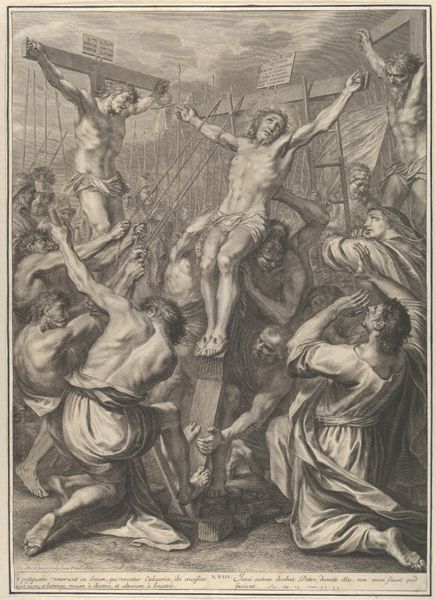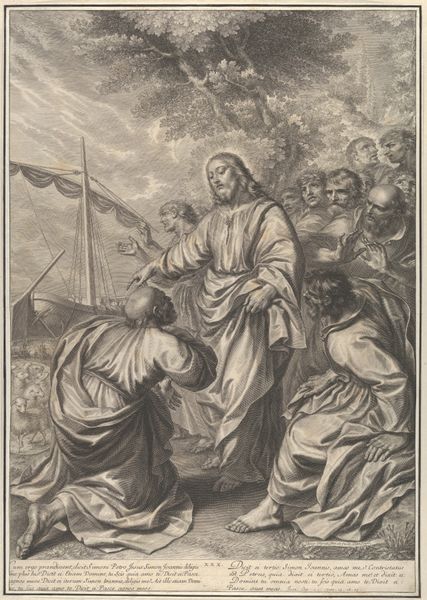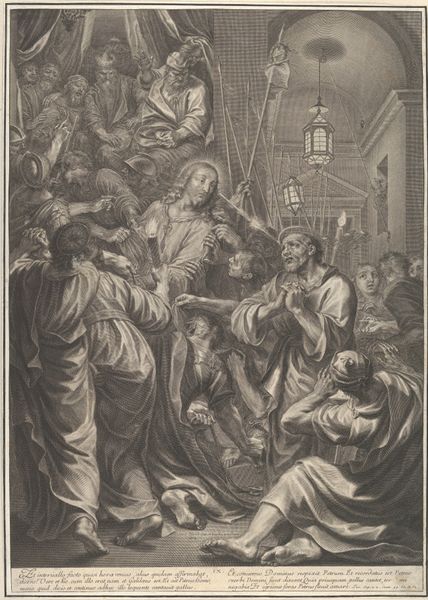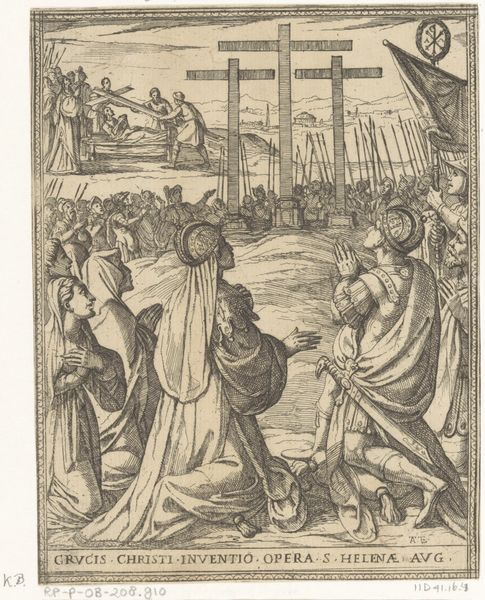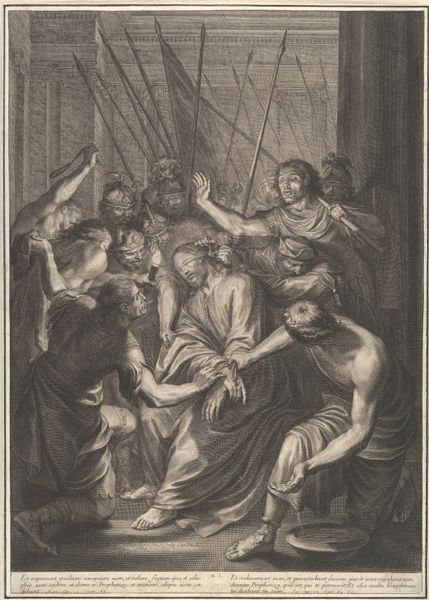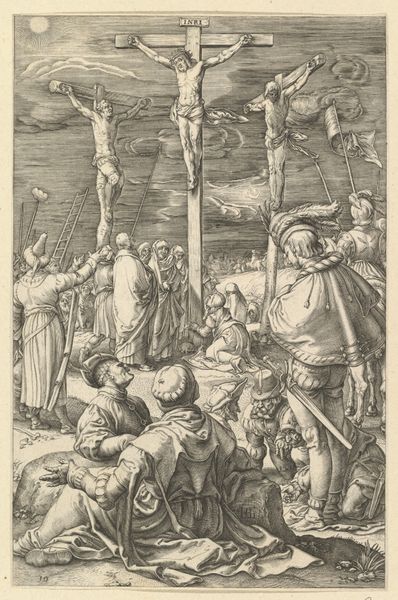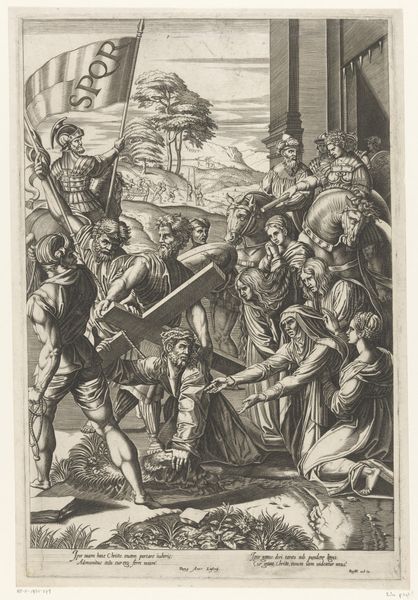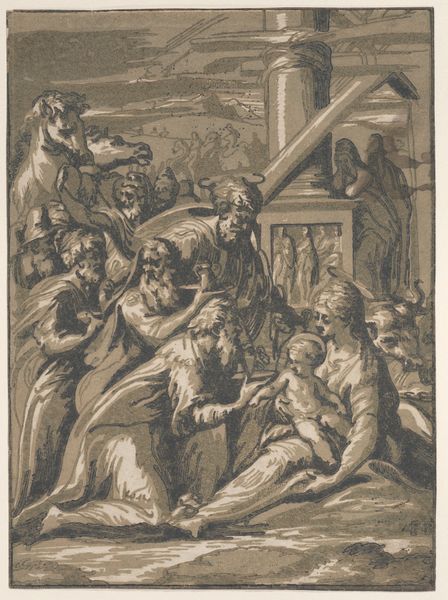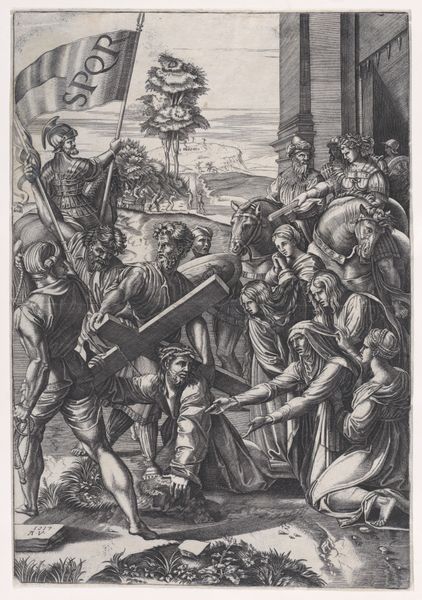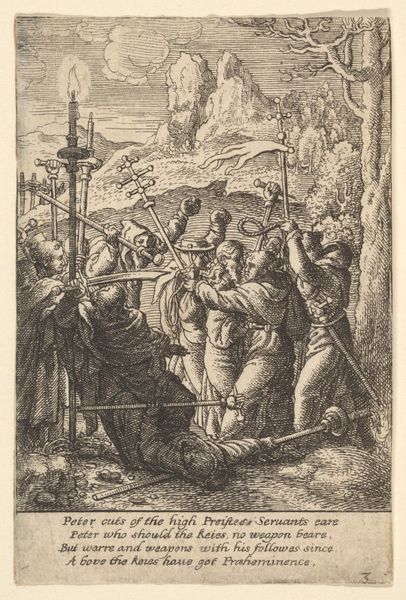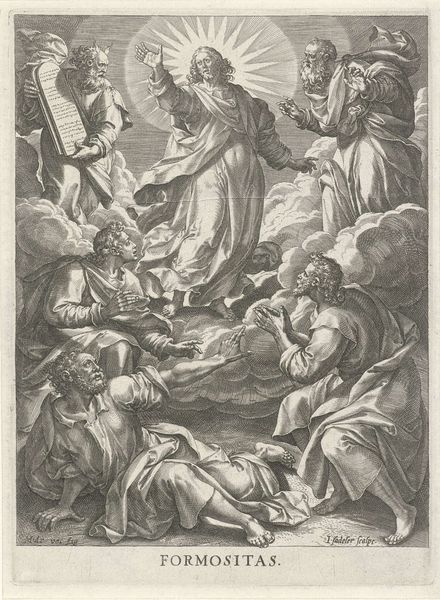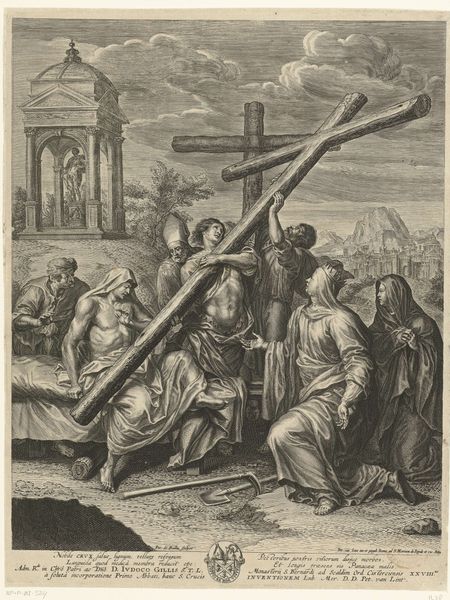
Christ Carrying the Cross, from The Passion of Christ, plate 17 1664
0:00
0:00
drawing, print, engraving
#
drawing
#
baroque
# print
#
caricature
#
figuration
#
cross
#
child
#
men
#
portrait drawing
#
history-painting
#
engraving
#
christ
Dimensions: Sheet: 20 1/8 in. × 14 in. (51.1 × 35.5 cm)
Copyright: Public Domain
Curator: Let’s spend a moment contemplating this intricate engraving: Grègoire Huret's "Christ Carrying the Cross, from The Passion of Christ, plate 17," created in 1664. It's currently held at the Metropolitan Museum of Art. Editor: Immediately, I’m struck by the palpable tension radiating from this scene. The sharp lines of the engraving create a chaotic and oppressive atmosphere. Look at how Christ is almost engulfed by the pressing figures surrounding him. Curator: Huret was operating in a historical context where religious imagery played a critical role in shaping public perception and devotion. Prints like these facilitated widespread dissemination of narratives. It is one of seventeen works depicting this famous, foundational moment in the Christian narrative. Editor: And how do you see the choices of materiality in this work relating to production? The relative ease with which engravings can be reproduced allowed for art to be easily circulated among the working class. I think of it as the art market catering to everyday life and beliefs, where consumers interact with objects not of pure artistic vision, but through widely spread prints and illustrations. Curator: Indeed. The medium itself allows a dialogue to emerge surrounding accessibility and visibility in 17th-century religious and social climates. Observe how Huret used line and composition to elicit a strong emotional response from the viewer, manipulating visual tools for socio-religious indoctrination. Editor: Absolutely. Think about the labour of making engravings like these. We can also discuss the economic structures in the production of these images. Who bought them and what was their function to them? Were these pieces of art bought to show the owners commitment to the religion, or even class solidarity among religious elites? Curator: Those are relevant and thoughtful considerations that further enrich the historical understanding of art. It emphasizes how art operates within established hierarchies and structures. It’s definitely interesting to witness the complex dynamics interwoven into its production. Editor: I agree, recognizing these tangible aspects allows us to grasp a better comprehension of both its historical backdrop, and production practices. Thank you.
Comments
No comments
Be the first to comment and join the conversation on the ultimate creative platform.

